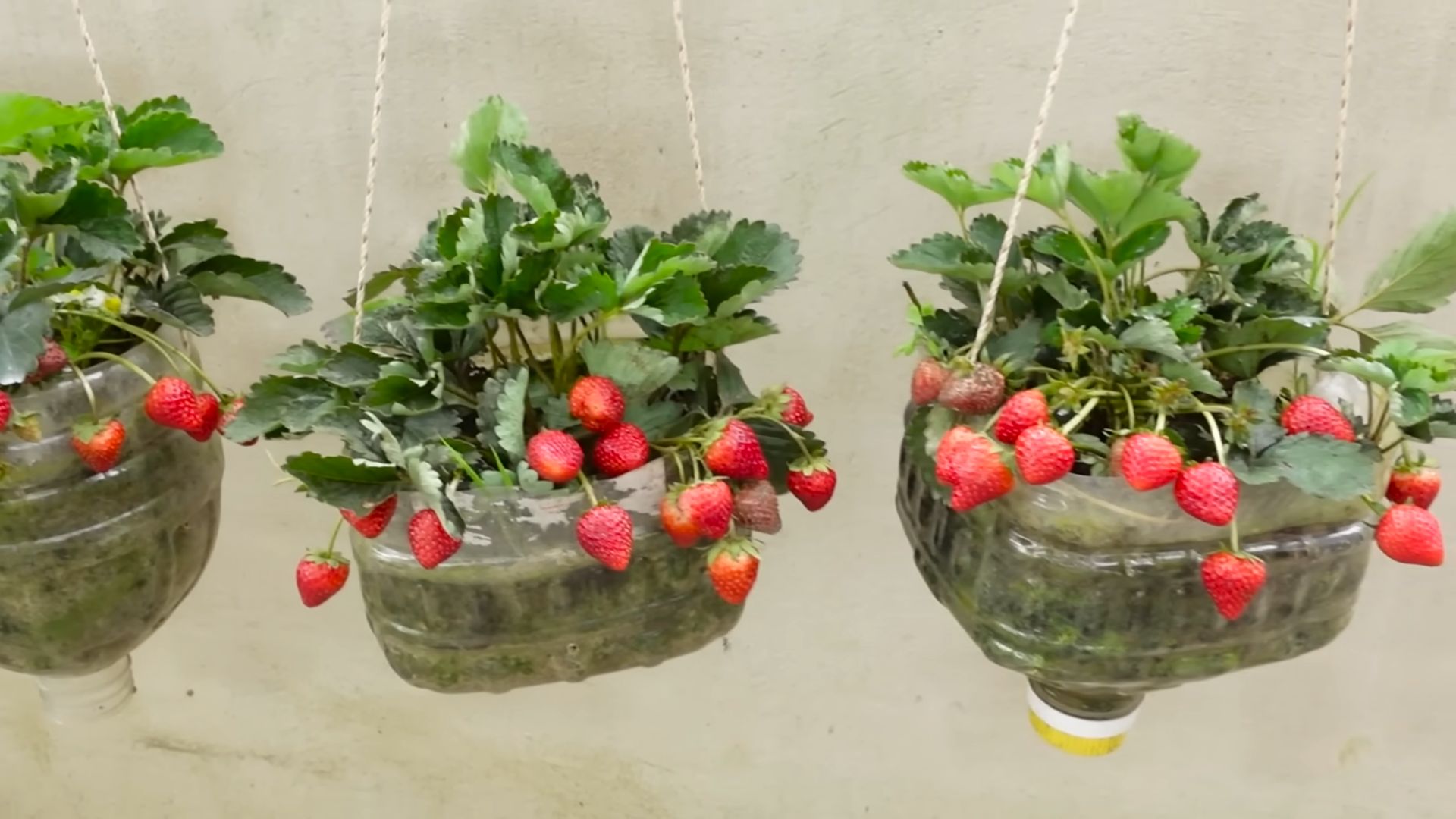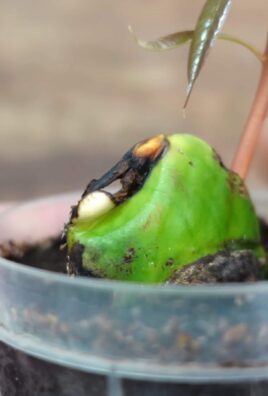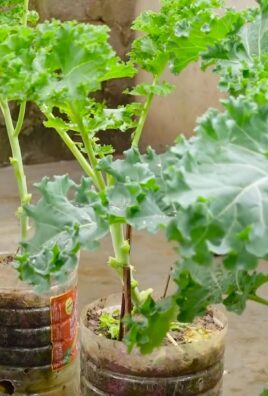Growing Strawberries No Garden? No problem! Imagine biting into a juicy, sun-ripened strawberry, bursting with flavor, all grown by *you*, even if you don’t have a traditional garden. Sounds impossible? Think again! This article is your ultimate guide to unlocking the secrets of cultivating delicious strawberries, regardless of your limited space.
For centuries, strawberries have been cherished not only for their delectable taste but also for their vibrant color and nutritional benefits. From ancient Roman gardens to medieval monastery plots, these little red gems have held a special place in our hearts and diets. But what if you live in an apartment, a condo, or simply lack the sprawling backyard of your dreams? Does that mean you have to miss out on the joy of fresh, homegrown strawberries?
Absolutely not! That’s where our DIY tricks and hacks come in. In today’s fast-paced world, many of us are craving a connection to nature, a way to de-stress, and a source of fresh, healthy food. Growing strawberries, even without a garden, offers all of that and more. We’ll show you how to transform balconies, patios, and even sunny windowsills into thriving strawberry patches. From choosing the right containers and soil to mastering watering and fertilization techniques, we’ll cover everything you need to know to enjoy a bountiful harvest of sweet, homegrown strawberries. Get ready to discover the joy of growing strawberries no garden required!

Growing Strawberries Without a Garden: The Ultimate DIY Guide
Hey there, fellow strawberry lovers! Dreaming of juicy, red strawberries but lacking a traditional garden? Don’t fret! I’m here to show you how to grow your own delicious strawberries, even if you only have a balcony, patio, or even just a sunny windowsill. We’re going to explore a few different methods, so you can pick the one that best suits your space and style. Let’s get started!
Choosing Your Strawberry Variety
Before we dive into the DIY projects, let’s talk strawberries. Not all varieties are created equal, especially when it comes to container gardening. Here are a few of my favorites:
* Everbearing Strawberries: These are fantastic for continuous harvests throughout the growing season. They produce two to three main crops – one in spring, one in summer, and sometimes another in fall.
* Day-Neutral Strawberries: Similar to everbearing, day-neutral varieties produce fruit throughout the growing season, regardless of day length. They’re a reliable choice for consistent strawberry goodness.
* June-Bearing Strawberries: These produce one large crop of strawberries in June (hence the name!). While you won’t get continuous harvests, the berries are often larger and incredibly flavorful.
Consider your climate and desired harvest schedule when making your choice. Local nurseries are a great resource for finding varieties that thrive in your area.
Method 1: The Classic Container Garden
This is the simplest and most straightforward method. All you need are some containers, potting mix, and strawberry plants!
Materials You’ll Need:
* Containers (at least 8 inches in diameter and depth per plant)
* High-quality potting mix (specifically for containers)
* Strawberry plants (runners or bare-root plants)
* Watering can or hose
* Slow-release fertilizer (optional)
* Mulch (straw, wood chips, or pine needles)
Step-by-Step Instructions:
1. Choose Your Containers: Select containers with good drainage holes. Terra cotta pots are great because they allow the soil to breathe, but plastic pots work just as well. I personally love using hanging baskets for a cascading strawberry display!
2. Prepare the Potting Mix: Fill your containers with a high-quality potting mix. Avoid using garden soil, as it can become compacted in containers and hinder drainage. I like to mix in some compost for added nutrients.
3. Plant Your Strawberries: Gently remove the strawberry plants from their nursery containers. Loosen the roots slightly and plant them in the prepared containers, ensuring that the crown (the point where the roots meet the stem) is just above the soil line.
4. Water Thoroughly: Water the newly planted strawberries thoroughly until water drains out of the bottom of the container. This helps settle the soil and encourages root growth.
5. Add Mulch: Apply a layer of mulch around the base of the plants. Mulch helps retain moisture, suppress weeds, and keep the berries clean. Straw is a classic choice, but wood chips or pine needles also work well.
6. Fertilize (Optional): If desired, add a slow-release fertilizer to the potting mix according to the package instructions. This will provide your strawberries with a steady supply of nutrients throughout the growing season.
7. Place in a Sunny Location: Strawberries need at least 6-8 hours of sunlight per day to thrive. Place your containers in a sunny spot on your balcony, patio, or windowsill.
8. Water Regularly: Water your strawberries regularly, especially during hot, dry weather. Check the soil moisture by sticking your finger into the soil. If the top inch feels dry, it’s time to water.
9. Harvest Your Strawberries: Once the strawberries turn a deep red color and are slightly soft to the touch, they’re ready to harvest! Gently twist the berry off the stem. Enjoy your homegrown strawberries!
Method 2: The Strawberry Tower
This method is perfect for maximizing space and creating a visually stunning display. You can buy pre-made strawberry towers, but building your own is much more rewarding (and often cheaper!).
Materials You’ll Need:
* A large plastic container (at least 2 feet tall and 1 foot in diameter)
* A drill with a 2-3 inch hole saw attachment
* Landscape fabric or burlap
* Potting mix
* Strawberry plants
* Gravel or small stones
* Watering can or hose
Step-by-Step Instructions:
1. Prepare the Container: Drill holes evenly spaced around the sides of the plastic container. These holes will be where you plant your strawberries. I usually space them about 6-8 inches apart.
2. Line the Container: Line the inside of the container with landscape fabric or burlap. This will help prevent the soil from washing out through the holes.
3. Add Gravel for Drainage: Place a layer of gravel or small stones at the bottom of the container to improve drainage.
4. Fill with Potting Mix: Gradually fill the container with potting mix, starting from the bottom. As you fill, insert strawberry plants into the holes you drilled. Gently spread out the roots and pack the soil around them.
5. Continue Filling and Planting: Continue filling the container with potting mix and planting strawberries until you reach the top.
6. Water Thoroughly: Water the strawberry tower thoroughly until water drains out of the bottom.
7. Place in a Sunny Location: Place your strawberry tower in a sunny spot that receives at least 6-8 hours of sunlight per day.
8. Water Regularly: Water the strawberry tower regularly, especially during hot, dry weather. You may need to water more frequently than with traditional containers, as the soil can dry out quickly.
9. Harvest Your Strawberries: Harvest your strawberries as they ripen, just like with the container garden method.
Method 3: The Gutter Garden
This is a fun and creative way to grow strawberries, especially if you have limited space. You can hang the gutters from a fence, railing, or even a wall.
Materials You’ll Need:
* PVC gutters (as many as you want!)
* End caps for the gutters
* Drill
* Screws or bolts
* Chain or rope for hanging
* Potting mix
* Strawberry plants
* Watering can or hose
Step-by-Step Instructions:
1. Prepare the Gutters: Attach end caps to both ends of each gutter. Drill drainage holes along the bottom of the gutters, spaced about 6 inches apart.
2. Attach Hanging Hardware: Drill holes near the top of each gutter, on either end. Attach chain or rope to these holes for hanging.
3. Hang the Gutters: Hang the gutters from a fence, railing, or wall, ensuring they are level and secure.
4. Fill with Potting Mix: Fill the gutters with potting mix.
5. Plant Your Strawberries: Plant strawberry plants in the gutters, spacing them about 6-8 inches apart.
6. Water Thoroughly: Water the newly planted strawberries thoroughly until water drains out of the drainage holes.
7. Place in a Sunny Location: Ensure the gutters are in a sunny spot that receives at least 6-8 hours of sunlight per day.
8. Water Regularly: Water the gutters regularly, especially during hot, dry weather.
9. Harvest Your Strawberries: Harvest your strawberries as they ripen, just like with the other methods.
Method 4: The Upside-Down Strawberry Planter
This is a quirky and eye-catching way to grow strawberries. It’s also a great option for preventing pests and diseases.
Materials You’ll Need:
* A 5-gallon bucket or large plastic container
* A drill with a 2-3 inch hole saw attachment
* Potting mix
* Strawberry plants
* Watering can or hose
* Chain or rope for hanging
Step-by-Step Instructions:
1. Drill a Hole: Drill a 2-3 inch hole in the bottom of the bucket.
2. Insert the Strawberry Plant: Gently thread the leaves of a strawberry plant through the hole, so the roots are inside the bucket and the leaves are hanging out. This can be a little tricky, so be patient!
3. Fill with Potting Mix: Carefully fill the bucket with potting mix, packing it around the roots of the strawberry plant.
4. Add More Plants (Optional): You can drill additional holes around the sides of the bucket and add more strawberry plants if desired.
5. Hang the Planter: Attach chain or rope to the handle of the bucket for hanging.
6. Water Thoroughly: Water the planter thoroughly until water drains out of the bottom.
7. Place in a Sunny Location: Hang the

Conclusion
So, there you have it! Growing strawberries without a garden is not only possible, it’s surprisingly easy and incredibly rewarding. We’ve explored a simple yet effective DIY trick that transforms balconies, patios, and even sunny windowsills into thriving strawberry patches. This method, focusing on vertical space and readily available materials, opens up the joy of fresh, homegrown strawberries to everyone, regardless of their living situation.
Why is this DIY trick a must-try? Because it democratizes access to fresh produce. Imagine plucking sun-ripened, juicy strawberries right outside your kitchen door, knowing exactly where they came from and what went into growing them. No more questionable supermarket berries that lack flavor and are often laden with pesticides. This is about taking control of your food source, even in a small way, and experiencing the unparalleled taste of truly fresh, homegrown fruit.
Beyond the practical benefits, this project is also incredibly satisfying. There’s something deeply fulfilling about nurturing a plant from seedling to harvest, witnessing the miracle of nature unfold before your eyes. It’s a therapeutic activity that connects you to the earth, even in the heart of the city. Plus, it’s a fantastic way to get kids involved in gardening and teach them about where their food comes from.
Looking for variations? Absolutely! You can experiment with different types of containers. While we focused on readily available plastic containers, you could use terracotta pots for a more rustic look, or even repurpose old buckets or tires. Just ensure proper drainage. Consider different strawberry varieties too. Everbearing strawberries are a great choice for continuous harvests throughout the season, while June-bearing varieties offer a larger crop all at once. You can also add companion plants like basil or marigolds to deter pests and attract pollinators.
Don’t be afraid to get creative and personalize your strawberry growing setup. The beauty of this DIY project is its adaptability. Tailor it to your specific space, resources, and preferences. Most importantly, don’t be intimidated. Even if you’ve never grown anything before, this is a great place to start. Strawberries are relatively easy to care for, and the rewards are well worth the effort.
We wholeheartedly encourage you to try this DIY trick for growing strawberries without a garden. It’s a simple, affordable, and incredibly rewarding project that will bring a touch of nature and a burst of flavor to your life. Once you’ve given it a go, we’d love to hear about your experience! Share your photos, tips, and challenges in the comments below. Let’s build a community of urban strawberry growers and inspire others to embrace the joy of homegrown goodness. Happy growing!
Frequently Asked Questions (FAQ)
What kind of soil should I use for growing strawberries in containers?
The best soil for container-grown strawberries is a well-draining potting mix that’s rich in organic matter. Avoid using garden soil, as it tends to compact in containers and doesn’t provide adequate drainage. Look for a potting mix specifically formulated for fruits and vegetables, or create your own by combining equal parts peat moss, perlite, and compost. The key is to ensure the soil retains moisture but doesn’t become waterlogged, which can lead to root rot. Adding a slow-release fertilizer to the soil at planting time will also provide essential nutrients for healthy growth and abundant fruit production.
How often should I water my container strawberries?
Watering frequency depends on several factors, including the weather, the size of your container, and the type of potting mix you’re using. As a general rule, water your strawberries whenever the top inch of soil feels dry to the touch. During hot, sunny weather, you may need to water them daily, or even twice a day. In cooler, cloudier weather, you can water them less frequently. Be sure to water thoroughly, until water drains out of the bottom of the container. Avoid overwatering, as this can lead to root rot. A good way to check if your strawberries need watering is to lift the container. If it feels light, it’s likely time to water.
How much sunlight do strawberries need?
Strawberries need at least six to eight hours of direct sunlight per day to produce a good crop of fruit. Choose a location for your containers that receives plenty of sunlight throughout the day. If you’re growing strawberries indoors, place them near a sunny window or supplement with grow lights. Insufficient sunlight can result in leggy plants, poor fruit production, and bland-tasting berries. If you live in a particularly hot climate, you may need to provide some afternoon shade to protect your plants from scorching.
What kind of fertilizer should I use for strawberries?
Strawberries benefit from regular fertilization, especially during the growing season. Use a balanced fertilizer with an NPK ratio of 10-10-10 or 12-12-12. You can also use a fertilizer specifically formulated for berries. Apply fertilizer according to the package directions, typically every two to four weeks. Avoid over-fertilizing, as this can burn the roots and damage the plants. Organic options include compost tea, fish emulsion, and seaweed extract. These provide essential nutrients while also improving soil health.
How do I protect my strawberries from pests and diseases?
Several pests and diseases can affect strawberries, including aphids, spider mites, slugs, and fungal diseases like powdery mildew. To prevent problems, start with healthy plants and provide them with proper care. Inspect your plants regularly for signs of pests or diseases. If you find any, take action immediately. You can use insecticidal soap or neem oil to control aphids and spider mites. Slug bait or handpicking can help control slugs. To prevent fungal diseases, ensure good air circulation around your plants and avoid overhead watering. If necessary, use a fungicide specifically labeled for use on strawberries. Companion planting with herbs like basil and marigolds can also help deter pests.
How do I overwinter my strawberry plants in containers?
Strawberry plants are perennial, meaning they can live for several years. However, they need protection from freezing temperatures during the winter. If you live in a cold climate, you can overwinter your strawberry plants in a garage or shed. Before the first frost, move your containers to a sheltered location. Water them sparingly throughout the winter, just enough to keep the soil from drying out completely. In the spring, after the last frost, gradually acclimate your plants to outdoor conditions before moving them back to their sunny location. In milder climates, you may be able to leave your strawberry plants outdoors, but protect them from frost by covering them with a blanket or tarp.
When is the best time to harvest strawberries?
Strawberries are ready to harvest when they are fully red and slightly soft to the touch. Gently twist the berry off the plant, leaving the green cap and a short stem attached. Harvest your strawberries in the morning, after the dew has dried. Avoid harvesting them during the heat of the day, as they will be more susceptible to bruising. Store your harvested strawberries in the refrigerator and use them within a few days.
Can I grow strawberries from seed?
Yes, you can grow strawberries from seed, but it’s a more challenging process than starting with established plants. Strawberry seeds require a period of cold stratification before they will germinate. This means they need to be exposed to cold temperatures for several weeks. You can do this by placing the seeds in a damp paper towel in a plastic bag and refrigerating them for four to six weeks. After stratification, sow the seeds in a seed-starting mix and keep them moist. Germination can take several weeks. Once the seedlings are large enough to handle, transplant them into individual pots.
How long does it take for strawberries to produce fruit?
The time it takes for strawberries to produce fruit depends on the type of strawberry and the growing conditions. June-bearing strawberries typically produce fruit the following spring after planting. Everbearing strawberries may produce a small crop the first year, but the main crop will be the following year. Day-neutral strawberries can produce fruit throughout the growing season, starting a few months after planting. Providing your strawberries with proper care, including adequate sunlight, water, and fertilizer, will help them produce fruit sooner.





Leave a Comment